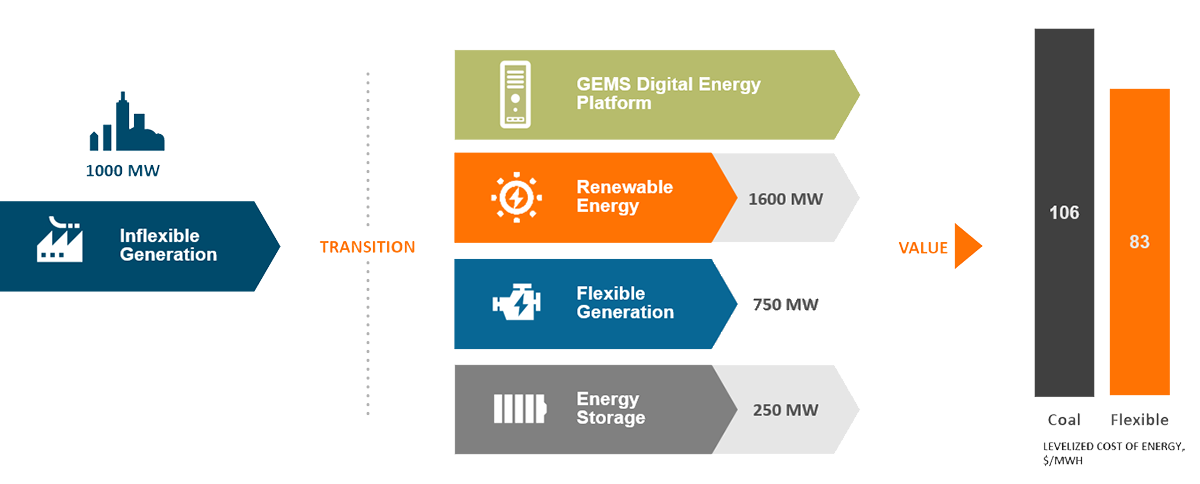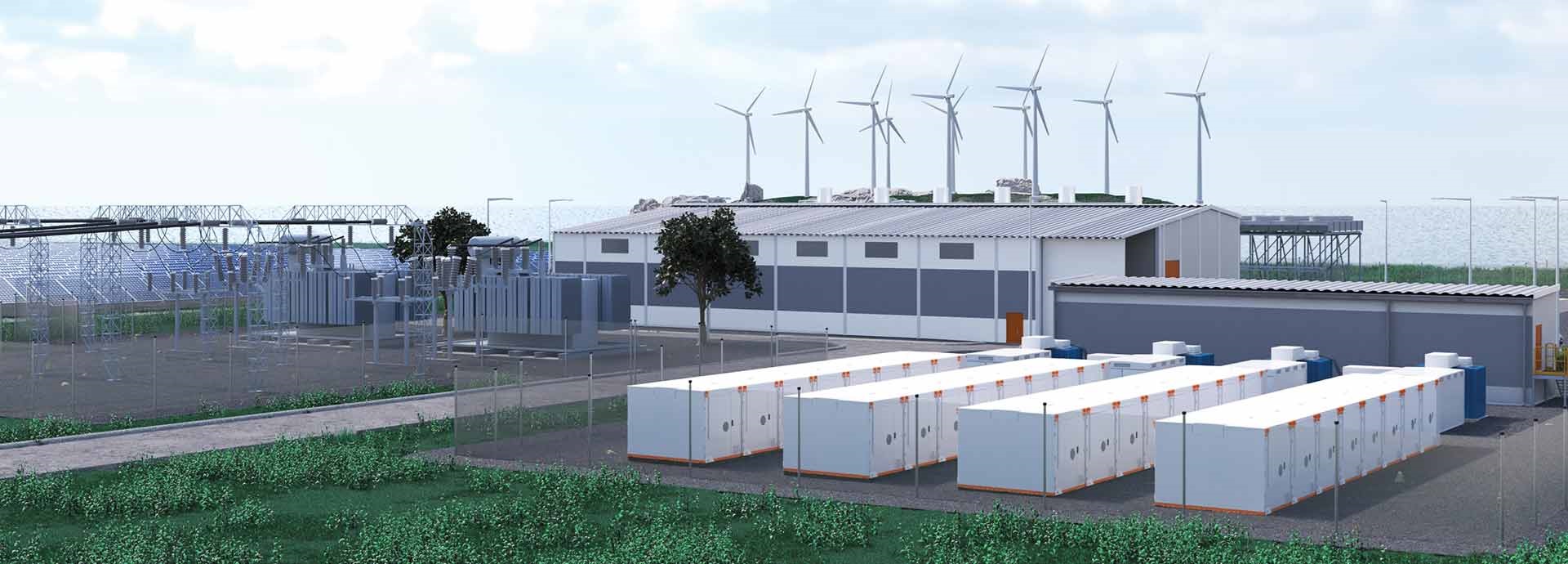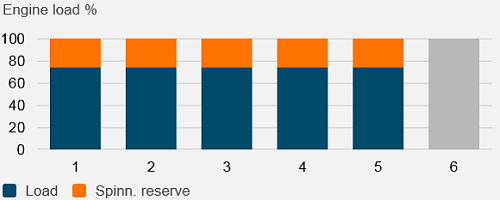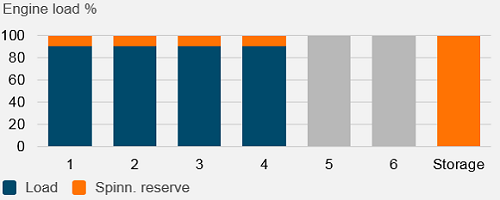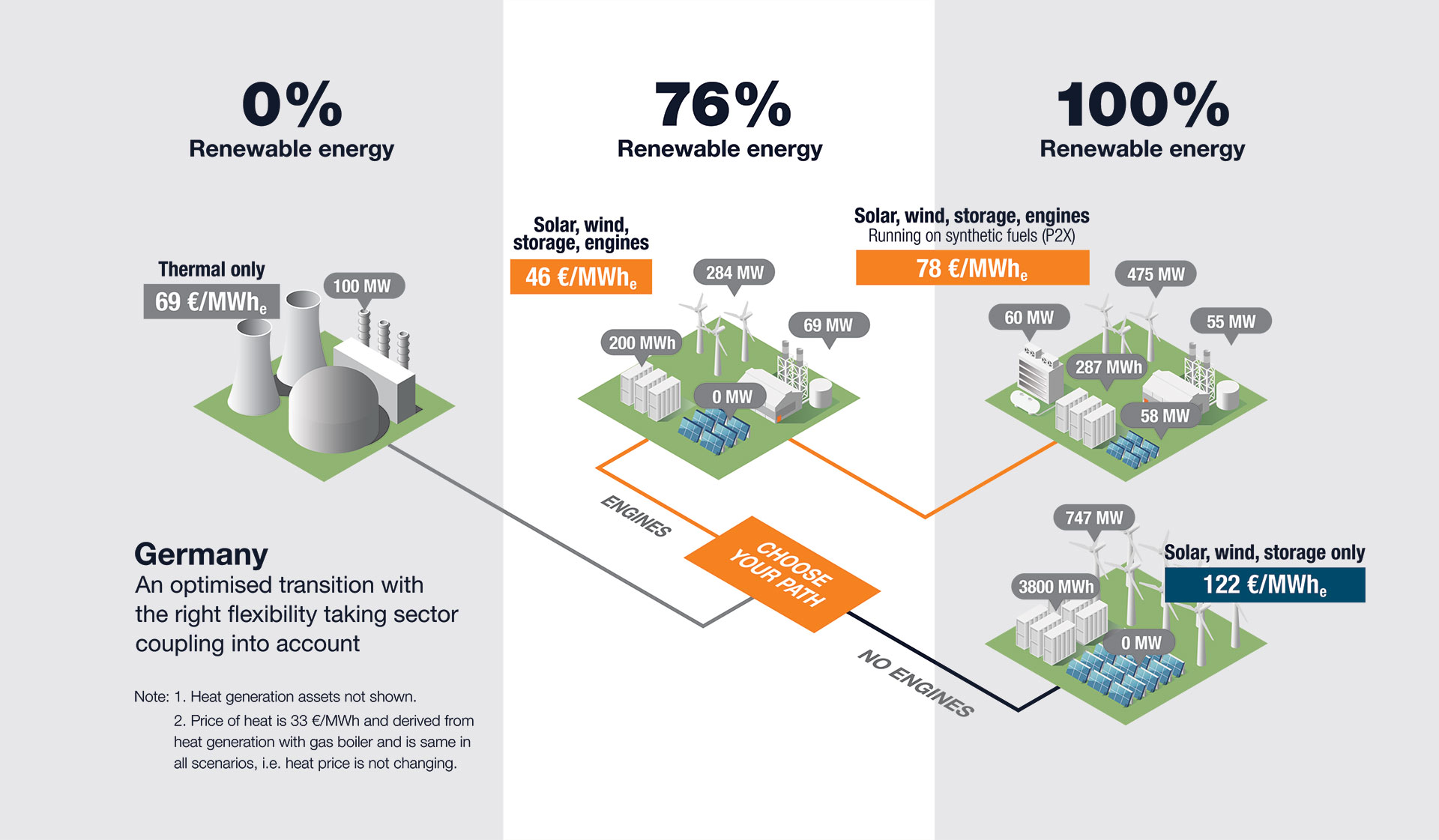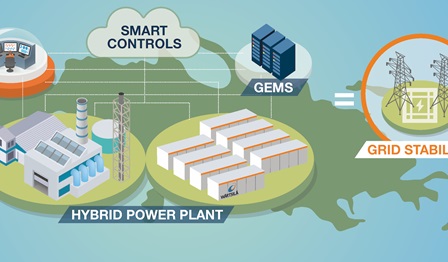
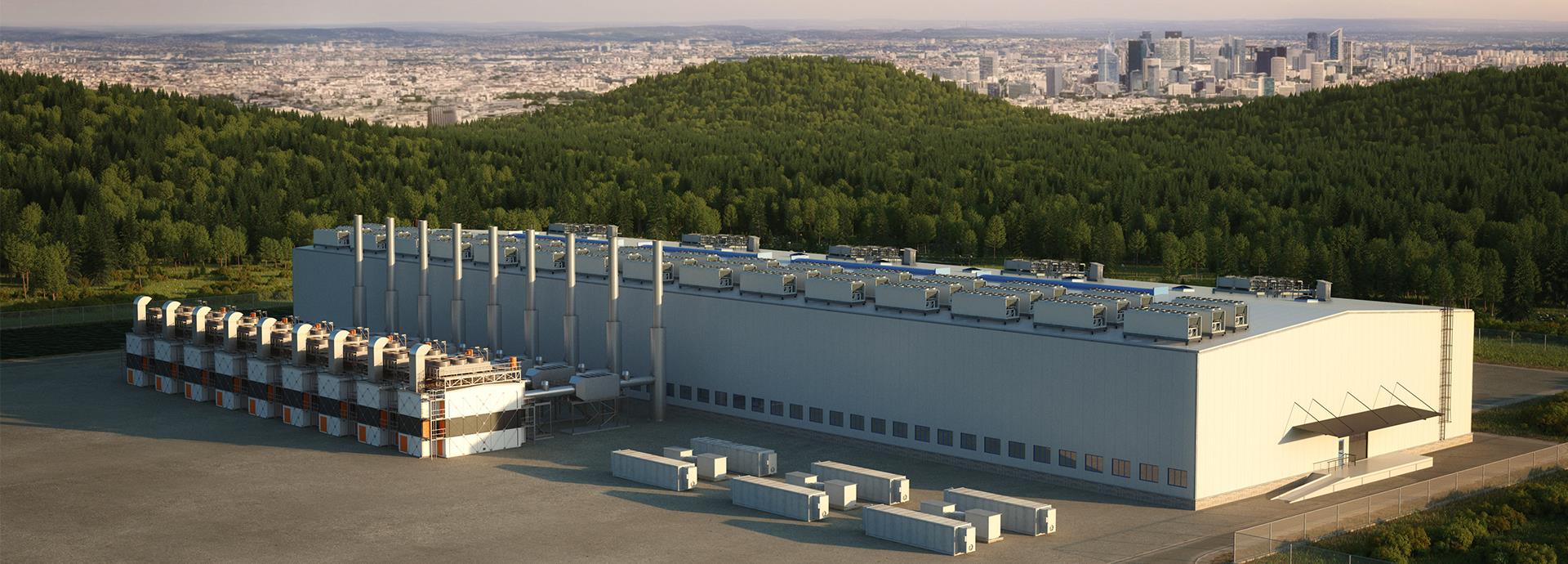
Hybrid power plants
Wärtsilä’s innovative hybrid energy solutions support and accelerate this transition towards a clean energy future. They combine energy storage and a flexible engine power plants which can be integrated with renewable assets, providing considerable potential for fuel and cost savings – especially in remote areas such as island and isolated grids where fuel prices tend to be high.
The value of the energy produced by a hybrid power plant can be enhanced with the Wärtsilä GEMS Digital Energy Platform, which uses data-driven intelligence to monitor, control and optimise energy production at both site and portfolio levels.
Reduce fuel costs and emissions with energy storage
Adding renewable generation capacity to a power system isn’t the only way to achieve cleaner electricity production. According to studies carried out by Wärtsilä, adding energy storage to a gas power plant can reduce its fuel consumption and therefore emissions by as much as 6%.
Sample applications
- Instant power
- Power quality – frequency and voltage control
- Spinning reserve replacement
- Ancillary services
- Black-start capability
Benefits
- Optimised plant operation
- Fuel savings and emission reduction
- Maintenance optimisation and cost savings
- Regulatory compliance
- Enhanced dispatchability
- Optimised integration of renewables and additional generation assets
Wärtsilä GEMS Digital Energy Platform
The Wärtsilä GEMS smart energy management software platform suite purpose-built, end-to-end grid management capabilities. The platform uses machine learning and historic and real-time data analytics to optimise the asset mix, and enables customers to remotely monitor, operate, identify and diagnose assets safely, reliably and flexibly.
Power-system modelling example
This example, based on power-system modelling by Wärtsilä, illustrates an optimised transition towards a 100% renewable energy system including the electricity cost per MWh. An optimal setup includes a combination of renewables, engines running on synthetic fuels and energy storage capacity. For further examples download Wärtsilä’s business white paper: The path towards a 100% renewable energy future.
Wärtsilä’s hybrid power system modelling takes into account the following parameters:
- Seasonal and hourly variations in electricity demand
- The cost, availability and hourly and seasonal variations of wind and solar energy
- The availability of technologies and fuels – such as synthetic fuels and biofuels – that can be used to balance the variable output of renewable sources
- The capital costs of different technologies
